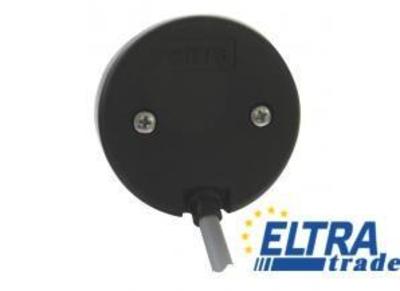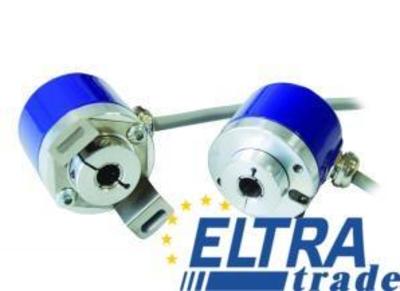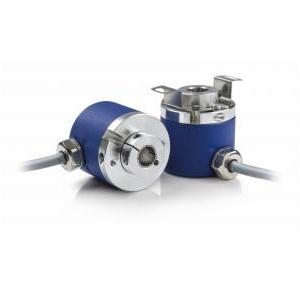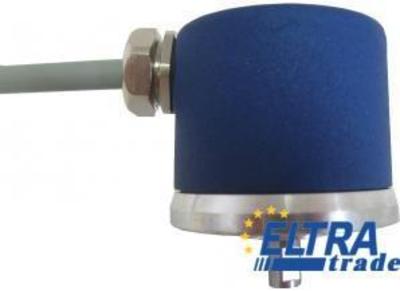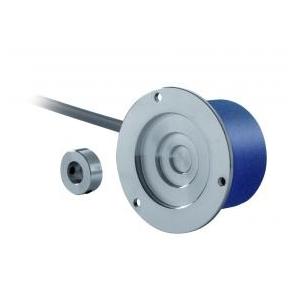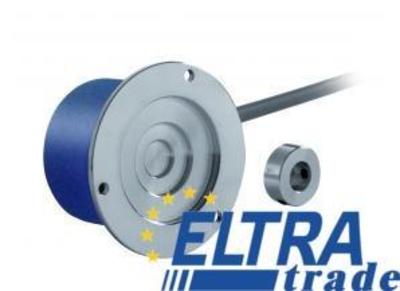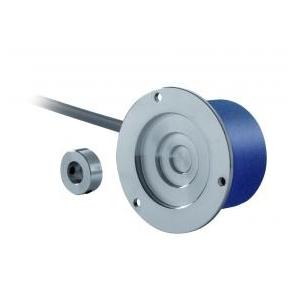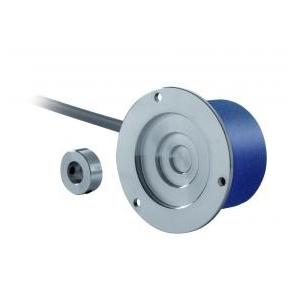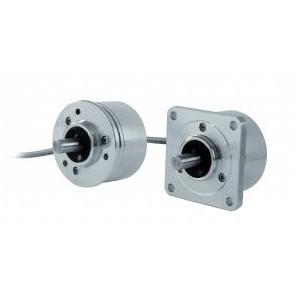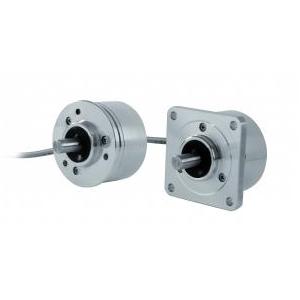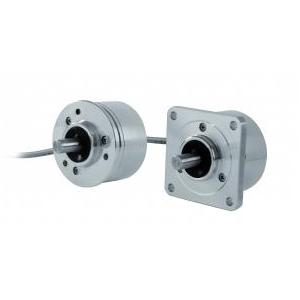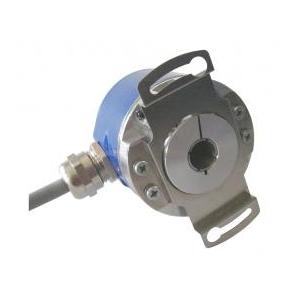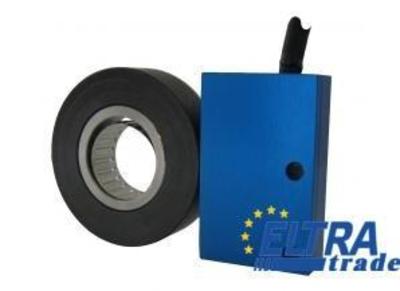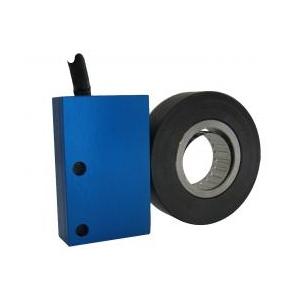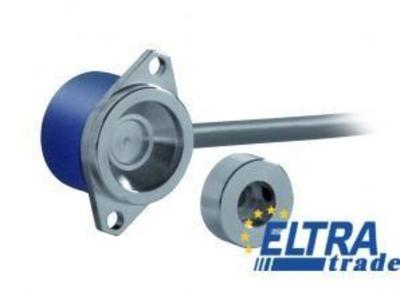Eltra Encoder Magnetic incremental encoder
IN STOCK!!!
Incremental hollow shaft encoder
Magnetic Incremental Encoder
Incremental encoder
Magnetic Incremental Encoder
Magnetic incremental kit encoder with fixing holes (diam. 48 mm)
Incremental encoder
Magnetic Incremental Encoder
Magnetic Incremental Encoder
Magnetic Incremental Encoder
Magnetic Incremental Encoder
Magnetic Incremental Encoder
Single Turn Absolute Magnetic Encoder
Magnetic incremental kit encoder.
Incremental encoder
Magnetic incremental kit encoder.
Magnetic incremental kit encoder.
Magnetic incremental kit encoder.
Magnetic incremental kit encoder.
Blind hollow shaft magnetic incremental encoder with stator coupling.
Blind hollow shaft magnetic incremental encoder with stator coupling.
Magnetic Incremental Encoders
Devices that are based on magnetic encoder technology are used in various applications to measure the position, speed, and direction of rotation of a shaft or a moving object. These encoders are based on magnetic sensing technology and provide incremental feedback, producing a series of pulses as the shaft or object rotates. Below, we will find out more about magnetic incremental encoder devices.
Types and Variations of Magnetic Incremental Encoders
Magnetic incremental encoders come in various types, each designed to meet specific application requirements. Here are some common magnetic incremental encoder types.
Hall effect magnetic encoders
Hall effect sensors are commonly used in magnetic incremental encoders. These sensors detect changes in the magnetic field and generate electrical signals based on the Hall effect principle. The rotation of the magnetic disk induces changes in the magnetic field, and the Hall sensors produce pulses accordingly.
Rotary magnetic encoders
Each rotary magnetic encoder is designed to measure the rotation of a shaft. They typically consist of a disk with magnetic poles and a sensor that detects changes in the magnetic field as the disk rotates. The sensor generates pulses, and the number of pulses per revolution determines the encoder's resolution.
Linear magnetic encoders
These encoders are used to measure linear motion rather than rotational motion. They operate similarly to rotary encoders but are configured to provide linear position feedback. This is useful in applications such as linear stages, machine tools, and other linear motion systems.
Magnetic strip encoders
Such devices use a linear strip with alternating magnetic poles, and a sensor (often based on Hall effect technology) detects the changes in the magnetic field as the strip moves. This type is commonly used in linear positioning systems.
Magnetostrictive encoders
Magnetostrictive encoders utilize the magnetostrictive properties of certain materials. A waveguide containing a magnetostrictive material is subjected to a magnetic field. As a magnetic field pulse travels along the waveguide, it induces a strain pulse that is detected and converted into an electrical signal. These are often used in linear position sensing.
Magnetic ring encoders
These devices consist of a ring-shaped magnetic strip with alternating poles, and a sensor detects the changes in the magnetic field as the ring rotates. This type is suitable for applications requiring a compact and low-profile design.
Magnetic disk encoders
Such encoders use a rotating disk with magnetic poles and a sensor to detect the changes in the magnetic field. They are common in rotary motion applications and are available in various resolutions.
Magnetic wheel encoders
Magnetic wheel encoders are designed for applications that measure the speed and direction of rotation. They often have a larger diameter and can be used when precise speed control is crucial.
Applications of Magnetic Incremental Encoders
Incremental magnetic rotary encoder solutions find applications in a wide range of industries and systems where precise measurement and control of position, speed, and direction are essential. Here are some common applications.
Engine feedback systems
Magnetic incremental encoders are commonly used in motor feedback systems to provide accurate information about rotor position, speed, and direction. This is critical for closed-loop control in various motor-driven systems, including industrial automation, robotics, and CNC machine tools.
Industrial automation
In industrial automation, magnetic incremental encoders are used in conveyor systems, material handling equipment, and other automated processes to monitor and control the position and speed of moving components.
Machine tools
Magnetic encoders are used in machine tools such as CNC (computer numerical control) machines to provide accurate information about the position of a tool or workpiece. This ensures precise machining and helps maintain tight tolerances.
Robotics
Robotics applications use magnetic incremental encoders to control the robot's joints and end-effectors precisely. This allows robots to perform tasks with precision and repeatability.
Printers and plotters
Magnetic incremental encoders are used in printers and plotters to control the movement of print heads or cutting tools. This ensures precise positioning and alignment during the printing or cutting process.
Medical equipment
Magnetic encoders are used in medical devices such as precision pumps and diagnostic equipment, where precise control of position and motion is critical to the device's functionality.
Aerospace and aviation
In aerospace and aviation engineering, magnetic incremental encoders are used in control surfaces, navigation systems, and other critical components where encoder accuracy is critical to provide precise positioning and feedback for flight control systems.
Renewable energy systems
Magnetic encoders are essential in renewable energy systems, especially wind turbines and solar tracking systems. They provide feedback to control systems to adjust the position of the blades or solar panels to optimize energy capture.
Automotive systems
Magnetic encoders are used in the automotive industry for various purposes, including throttle position detection, transmission positioning, and steering wheel angle measurement. They contribute to the overall efficiency and safety of automotive systems.
Equipment for packing
Magnetic incremental encoders are an integral part of packaging equipment and help control the movement of packaging materials, conveyor belts, and other components, ensuring accurate and efficient packaging processes.
Textile equipment
In textile manufacturing, magnetic encoders are used in machines to control the speed and position of yarn feeding, ensuring precision in weaving and knitting processes.
Elevators and escalators
Magnetic encoders facilitate precise control of elevators and escalators, helping to control position and adjust speed for safe and efficient vertical transportation.
Advantages and Features of Eltra Magnetic Encoders
Industrial automation solutions by Eltra have many benefits and features that can be useful in your application.
- Magnetic incremental encoders can be more robust in harsh environments than optical encoders. They are less susceptible to dust, dirt, and moisture contamination, making them suitable for industrial applications.
- They are often more cost-effective than high-resolution optical encoders, making them a practical choice for applications where cost is a significant consideration.
- Magnetic technology can enhance the reliability of encoders by reducing wear and tear associated with mechanical components. This contributes to a longer operational lifespan.
- Magnetic incremental encoders are often designed for flexible mounting options, allowing them to be easily integrated into various systems and machinery.
- These devices can be designed with a compact form factor, making them suitable for limited-space applications.
- Such encoders provide incremental output, generating pulses as the shaft or object rotates. The number of pulses per revolution determines the resolution.
- Magnetic encoders come in various resolutions, allowing users to choose the appropriate level of precision for their specific application.
- Such equipment is capable of high-speed operation, making them suitable for applications where rapid changes in position or speed must be monitored.
- Magnetic encoders are designed to operate within a wide temperature range, enabling their use in environments with varying temperature conditions.
Considerations for Selecting Magnetic Incremental Encoders
When selecting incremental position sensing devices you should ensure that the chosen magnetic incremental rotary encoder meets the specific requirements and performance criteria. Here are some important factors to consider.
- The resolution of the encoder determines the level of precision in position measurement. Higher resolutions provide finer angular or linear measurements. Consider the required resolution for your application to ensure accurate control.
- The number of counts or pulses the encoder generates per revolution is crucial. It determines the granularity of position information. Choose an encoder with an appropriate CPR or PPR based on the precision required for your system.
- Check the maximum speed and acceleration requirements of your system. Different encoders have different speed capabilities. Select an encoder that can handle your application's speed and acceleration demands without compromising accuracy.
- Evaluate the mounting options and mechanical compatibility of the encoder with your system. Ensure that the physical dimensions, shaft type, and mounting method align with your machinery's mechanical constraints and requirements.
- Magnetic incremental encoders can have different output interfaces, such as TTL, HTL, or open collector. Verify that the selected encoder's output interface is compatible with your application's control system or controller.
- Consider the electrical characteristics of the encoder, such as voltage and current requirements. Ensure the encoder's electrical specifications match your system's to guarantee proper functionality.
- Verify the operating temperature range of the encoder. Some applications may require encoders that can function in extreme temperature conditions. Choose an encoder that can withstand the temperature range of your operating environment.
Installation and Maintenance Tips for Magnetic Encoders
Proper installation and regular maintenance are crucial for the optimal performance and longevity of magnetic incremental encoders. Here are some tips to ensure the effective incremental magnetic encoder operation.
- Read the manufacturer's guidelines.
- Ensure proper mechanical alignment of the encoder with the shaft or the moving part it measures.
- Adequate mounting helps prevent vibrations and ensures the stability of the encoder during operation.
- If a shaft coupling is required, ensure it is installed correctly and does not introduce misalignment or eccentricity.
- Keep the encoder away from strong magnetic fields that could interfere with its operation. Route encoder cables away from sources of electrical noise and interference.
- Use enclosures or protective measures to shield the encoder from adverse conditions.
- If the installation environment is prone to exposure to liquids or contaminants, ensure the encoder is adequately sealed to prevent damage.
- Periodically inspect the encoder for signs of wear, damage, or contamination.
- Verify that all mounting fasteners are secure.
- If the encoder has moving parts that require lubrication, follow the manufacturer's recommendations for its type and frequency.
- Use any diagnostic features the encoder provides or invest in diagnostic tools to monitor its health and performance.
- Ensure that personnel involved in installation and maintenance are adequately trained on the specific requirements of magnetic incremental encoders and follow best practices.

